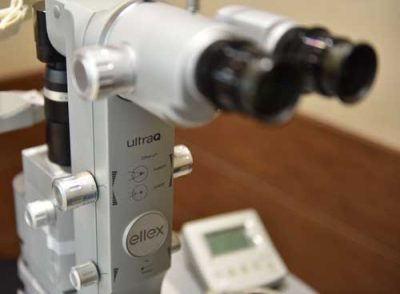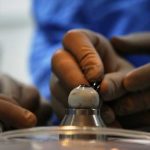Laser Procedures
 Laser Peripheral Iridotomy (LPI)
Laser Peripheral Iridotomy (LPI)
Laser Peripheral Iridotomy also described as ‘laser iridotomy’ or simply termed ‘iridotomy’ is a surgical procedure to prevent or treat angle-closure glaucoma. Laser PI helps to reduce the risk of angle-closure and glaucoma by allowing aqueous humor to traverse from the posterior to the anterior chamber and as a result, eliminates the pupillary block.
The procedure can be performed using the argon laser, the photodisruptive Q-switched Nd:YAG laser, or the combination of two lasers occasionally. A contact lens is placed on the eye to help focus the laser. Then the laser is applied to create a tiny hole in the iris for fluid drainage. The laser parameters should be individualized for any patient and adjusted during the surgery.
Laser PI includes short-lived effects such as blurring, light sensitivity, mild pain around the eyes, increased pressure in the eye, redness, or bleeding.
YAG Laser Capsulotomy
The most common complication after cataract surgery is opacification of the posterior capsule of the natural lens which may interfere with vision in ways similar to the original cataract.YAG Laser Capsulotomy is a surgical procedure to treat this complication.
During this outpatient procedure, the YAG laser is applied to make an opening in the lens capsule lining, so that light rays can enter the eye and focus on the retina more easily.
While YAG Laser Capsulotomy is a safe and successful procedure, there are some side effects following the surgery including increased intraocular pressure, swelling of the macula, swelling of the cornea, bleeding, damage, or displacement of the intraocular lens.
Selective Laser Trabeculoplasty (SLT)
Selective Laser Trabeculoplasty or SLT is a simple, yet highly effective laser procedure that reduces intraocular pressure in cases of ocular hypertension and glaucoma.
During the surgery, the laser is applied to selected pigmented tissue in the eye in order to facilitate the aqueous outflow through the trabecular meshwork and lower intraocular pressure.
After the surgery, a transient rise in IOP may occur however this complication of SLT is typically infrequent, mild, and short-lived.







